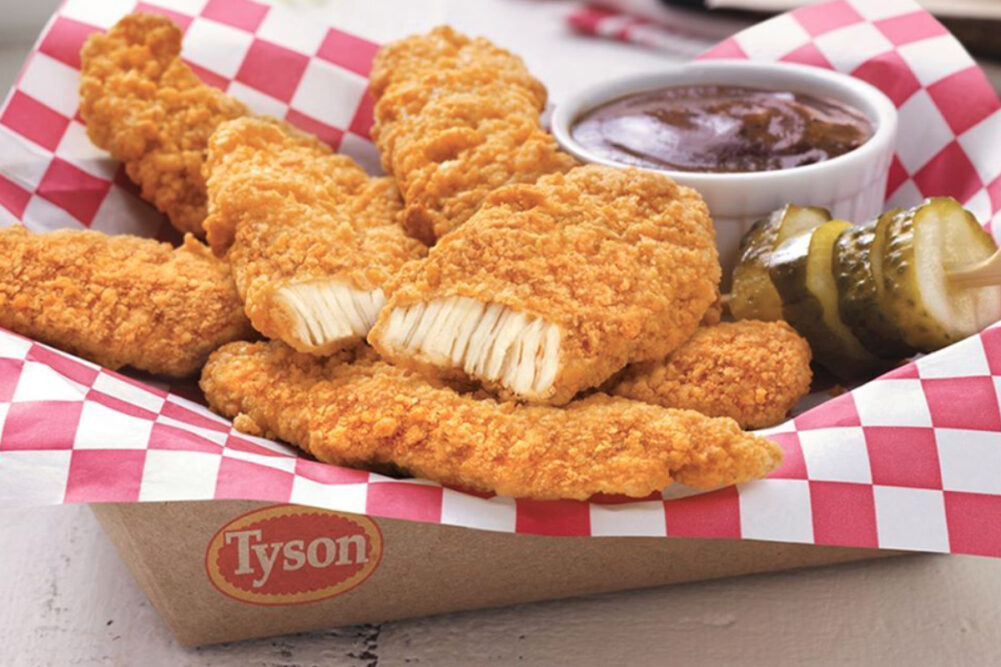SPRINGDALE, ARK. — While Tyson Foods, Inc.’s first-quarter results were in line with management’s expectations, events around the world are clouding the company’s outlook. Recently signed trade deals between the United States and other countries, and the impact of African swine fever, should provide a tailwind going forward. But the spread of coronavirus around the world may be a headwind. The massive fires in Australia may also prove to be a tailwind if it takes extended time for the country’s beef industry to recover.
“We believe with improved access to global markets from recent trade deals, we are well positioned to capitalize on opportunities in the global marketplace,” said Noel W. White, chief executive officer, during a Feb. 6 conference call with analysts. “In addition to U.S. trade deals with Japan and South Korea, we’re very pleased the phase one trade agreement with China and the U.S.M.C.A. have both been signed.
“An important benefit of the deal with China is the inclusion of more protein eligible for shipment. We’re shipping product to China and have more orders on the books. But keep in mind that tariffs that remain in place puts the U.S. at a pricing disadvantage in the Chinese market. If tariffs are lifted or reduced, we would likely see an acceleration of already increased global demand for U.S. pork, beef and chicken.”
Mr. White said the company is monitoring the coronavirus outbreak and assessing what its spread may mean for Tyson Foods’ business, but that the financial impact is unknown.
Speaking specifically about China, Mr. White said, “If anything, I’d say that we’re going to have quite a bit of volatility. As I mentioned, demand continues to be — or interest, at least — continues to be strong. There is certainly the need, and coronavirus has just clouded that a bit.
“There have been disruptions. There’s been disruptions in domestic production. There’s been disruption at the ports. So that has skewed shipments, receivables. I would expect that … once we get past the coronavirus incident, whenever that might be, that I do think that there’s going to be a very strong demand coming out of that. But trying to estimate what that time period is going to be is not possible at this point.”
For the first quarter ended Dec. 28, 2019, Tyson Foods earned $557 million, equal to $1.56 per share on the common stock, up from $551 million, or $1.54 per share, in the same period a year ago.
Sales for the quarter ticked up to $10,815 million from $10,193 million the year prior.
In a filing with the U.S. Securities and Exchange Commission (S.E.C.) for the quarter, Tyson Foods said it plans to cut 500 jobs, mostly in the corporate offices in Springdale, Ark., and Chicago.
“We have an ongoing focus on financial fitness to make sure our business remains competitive,” said Gary Mickelson, spokesperson for Tyson Foods. “This means we’re continually reviewing our resources including staffing levels. We’ve recently reduced some roles and relocated others. It’s always difficult to eliminate and move jobs, and we’re doing this only after careful consideration.”
The S.E.C. filing included a restructuring charge of $44 million for severances and other costs associated with the planned job cuts.
Tyson Foods’ Beef business had sales of $3,838 million during the quarter, down from the year prior when sales were $3,926 million. While sales slipped during the quarter, Beef operating income rose to $410 million from $305 million in 2019.
Beef sales volumes decreased during the quarter due to a fire that had temporarily closed one of the company’s beef processing plants. The average sales price of beef increased during the quarter due to strong demand.
Mr. White said drought and the fires in Australia are going to delay herd rebuilding and that may benefit Tyson Foods in the near term.
“With Australian beef amounting to quarter of U.S. beef imports, this could be beneficial to our business,” he said.
Chicken business unit sales were $3,292 million during the quarter, up from $3,115 million the year prior. Business unit operating income fell significantly from $160 million during the first quarter of 2019 to $57 million in 2020. Operating income was negatively impacted by $21 million in restructuring costs.
The company said soft pricing affected the Chicken unit and that management expects it to continue in the near term.
Tyson’s Prepared Foods sales fell slightly during the quarter, to $2,140 million from $2,149 million in 2019. Operating income fell sharply to $158 million from $265 million the year prior. Mr. White said the decline was due to an $80 million increase in raw material costs, driven by beef trim and hams, and $40 million in operational effects from the implementation of an E.R.P. system.
Pork sales rose to $1,379 million from $1,179 million, and operating income spiked to $191 million from $95 million the year prior.
“Strong pork demand and solid operational execution, along with ample hog supplies, led to a 14% adjusted operating margin in Q1,” Mr. White said. “Export markets were the primary driver for increased demand. We believe that we are at the very early stages of the (global) demand shifts that we’ve expected from African swine fever. We’re filling additional orders to China, and we’ve seen year-over-year increases nearly 600% in the first quarter, and we’re already benefiting from indirect shipments as we backfill in other markets.”





